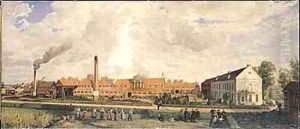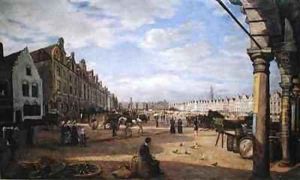Charles Paul Etienne Desavary Paintings
Charles Paul Etienne Desavary was a French artist born on November 17, 1837, in Arras, France. Though not as widely recognized as some of his contemporaries, Desavary was a talented painter who contributed to the art world during the 19th century with his depictions of landscapes and urban scenes.
Desavary was initially trained by his father, Charles-Antoine Desavary, who was also a painter. He later moved to Paris to further his studies and was taught by Constant Troyon and Camille Corot, two prominent French artists of the time. Corot, in particular, was a major influence on Desavary's work; his teachings on landscape painting had a lasting impact on the young artist.
During his career, Desavary became known for his landscape paintings and his ability to capture the essence of French countryside and urban life. His works often reflected the Barbizon school's approach to nature, emphasizing the beauty of the rural landscape and the changing effects of light and atmosphere. Desavary's paintings also showed the influence of the Impressionists, particularly in his use of color and light.
Despite his talent, Desavary's life was marked by financial difficulties and ill health, which limited his ability to gain the same level of fame as his mentors or peers. Yet, he did exhibit his work at the Paris Salon, an official annual exhibition of the French Academy of Fine Arts, which was the most esteemed art exhibition in the Western world at the time.
Charles Paul Etienne Desavary died on January 5, 1885, in Pas-de-Calais, France. Although he did not achieve widespread recognition during his lifetime, his works are appreciated by art historians and collectors for their contribution to the landscape genre and for their embodiment of 19th-century French art movements. Desavary's paintings can be found in various regional museums in France and in private collections.

